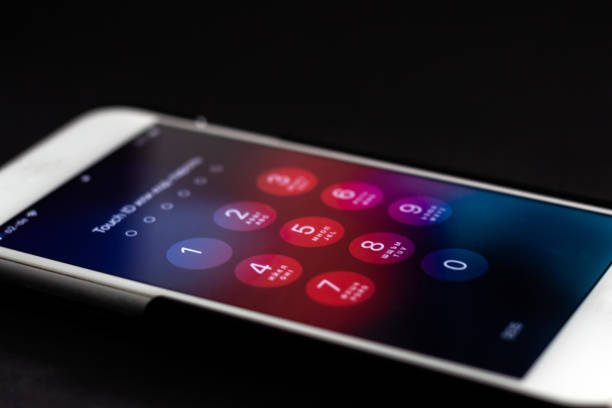Mobile app development is a crucial aspect of digital strategy for businesses, but choosing between iOS and Android platforms is a decision that requires careful budget considerations. Each platform presents unique challenges and opportunities in terms of development time, resource allocation, and ongoing costs. This article explores the key differences in development costs between iOS and Android, breaking down the factors that influence expenses and providing insights to help businesses make informed decisions.
1. Platform Popularity and Market Share
Overview: iOS and Android dominate the mobile OS landscape, but they cater to different user bases. Android has a significantly larger global market share, especially in emerging markets, while iOS tends to dominate in regions like North America, Western Europe, and parts of East Asia.
Budget Impact:
- iOS Development: Focused on a more affluent, premium user base with higher average spending power. This platform may offer higher returns on investment (ROI) for apps targeting high-value customers, particularly in developed markets.
- Android Development: Offers broader global reach, particularly in emerging markets, but the user base tends to be more diverse in terms of income and app spending behavior.
Key Takeaway: Choose the platform based on the target audience. If your app is geared towards premium users, iOS may be a better investment, whereas Android is ideal for mass-market appeal.
2. Development Costs Breakdown
a. Development Tools and Programming Languages
- iOS: iOS apps are developed using Apple’s proprietary tools, primarily Xcode, and the programming language Swift. Developers must adhere to Apple’s strict guidelines and ensure compatibility with the latest iOS versions. Swift is known for its ease of use and efficiency, which can reduce development time.
- Android: Android apps are typically built using Android Studio and the Kotlin or Java programming languages. Developing for Android is often more complex due to the platform’s fragmentation, with developers needing to account for a wide variety of devices, screen sizes, and OS versions.
Budget Impact: iOS development can sometimes be faster and more efficient due to fewer device variations, which reduces testing and debugging time. On the other hand, Android development may require more extensive testing across a variety of devices, increasing both time and cost.
Key Takeaway: Development for iOS tends to be more streamlined, which can lead to lower initial development costs, while Android development may incur higher testing and device compatibility costs.
b. Developer Rates
- iOS Developers: Typically command higher hourly rates compared to Android developers, especially in regions with high demand for Apple-focused expertise.
- Android Developers: Generally have slightly lower rates, though this varies by region and project complexity. However, Android projects may take longer due to fragmentation, which can offset the lower rates.
Key Takeaway: While iOS developers may have higher hourly rates, the streamlined nature of iOS development can result in lower overall development costs compared to Android.
3. Design and User Experience (UX) Considerations
a. UI/UX Design Complexity
- iOS: Apple provides clear guidelines for app design, emphasizing a consistent and standardized user experience across all devices. This simplifies the design process and reduces the complexity of UI/UX adjustments for different screen sizes.
- Android: Android apps must be designed to accommodate a broader range of screen sizes, resolutions, and device specifications. This requires more customization and can increase design time.
Budget Impact: Designing for Android can be more labor-intensive due to the need for adaptable layouts and customized UI elements. This may lead to higher design costs compared to iOS.
Key Takeaway: iOS app design tends to be more cost-effective due to Apple’s standardized approach, whereas Android’s diversity of devices can increase design complexity and associated costs.
4. App Testing and Quality Assurance
Overview: Testing and quality assurance (QA) are crucial parts of the app development process. The cost and time associated with testing vary significantly between iOS and Android.
- iOS: Fewer devices and a standardized OS make testing for iOS quicker and more straightforward. Developers typically need to ensure compatibility with only a few device models (iPhone, iPad) and the latest OS versions.
- Android: Due to the vast array of devices and OS versions in the Android ecosystem, testing can be more time-consuming. Developers must ensure the app works seamlessly across different device manufacturers (Samsung, Google, Xiaomi, etc.) and OS versions (from Android 10 to Android 14 and beyond).
Budget Impact: Testing for Android can be significantly more expensive than for iOS due to the need for comprehensive testing across many devices and OS versions.
Key Takeaway: Testing and QA are generally more costly for Android apps due to the platform’s fragmentation, which can result in longer testing phases and higher costs.
5. App Store Submission and Maintenance
a. App Store Submission Fees
- iOS: Apple charges a $99 annual fee for developers to submit apps to the App Store. The submission process is known to be stringent, with Apple enforcing strict quality and security standards. This can result in additional time and costs if the app needs multiple revisions to meet Apple’s criteria.
- Android: Google charges a one-time $25 fee to submit apps to the Google Play Store. The submission process is generally faster and less strict compared to iOS, though this can sometimes lead to more security vulnerabilities.
Key Takeaway: Apple’s higher submission fees and stringent review process can add to development costs, but may result in better app quality and security. Google’s lower fees and faster submission process can reduce upfront costs but may require more attention to app security and updates.
b. Ongoing Maintenance Costs
Overview: Both platforms require ongoing updates and maintenance to address bugs, security patches, and new OS releases. However, the nature of these costs can differ between iOS and Android.
- iOS: Apple frequently releases new iOS versions, and developers must ensure their apps remain compatible. However, because of the limited number of device models, updating apps for iOS is usually straightforward.
- Android: The fragmented nature of the Android ecosystem means developers need to maintain compatibility across various devices and OS versions, which can increase the frequency and complexity of updates.
Budget Impact: Maintenance costs tend to be higher for Android apps due to the platform’s diversity, whereas iOS apps benefit from Apple’s more uniform device and OS ecosystem.
Key Takeaway: Ongoing maintenance for Android apps can be more costly due to the need for frequent updates across a wide range of devices, while iOS maintenance is generally more predictable and less labor-intensive.
Conclusion: Which Platform Is More Cost-Effective?
The cost of developing an app for iOS or Android depends on various factors, including target audience, app complexity, and long-term maintenance needs. Here’s a breakdown:
- iOS Development: Generally offers lower design, testing, and maintenance costs due to the streamlined nature of the Apple ecosystem. However, iOS developers may command higher rates, and Apple’s strict app review process can add to submission costs. For apps targeting high-income users or developed markets, iOS is often the more cost-effective choice.
- Android Development: Offers access to a broader global audience but comes with higher design, testing, and maintenance costs due to platform fragmentation. Android may be the better option for businesses targeting emerging markets or mass-market audiences.
Ultimately, businesses should consider both short-term development costs and long-term maintenance expenses when choosing between iOS and Android. Many companies choose to develop for both platforms to maximize their reach, but for those with limited budgets, prioritizing one platform based on target demographics and revenue potential is a strategic decision.









